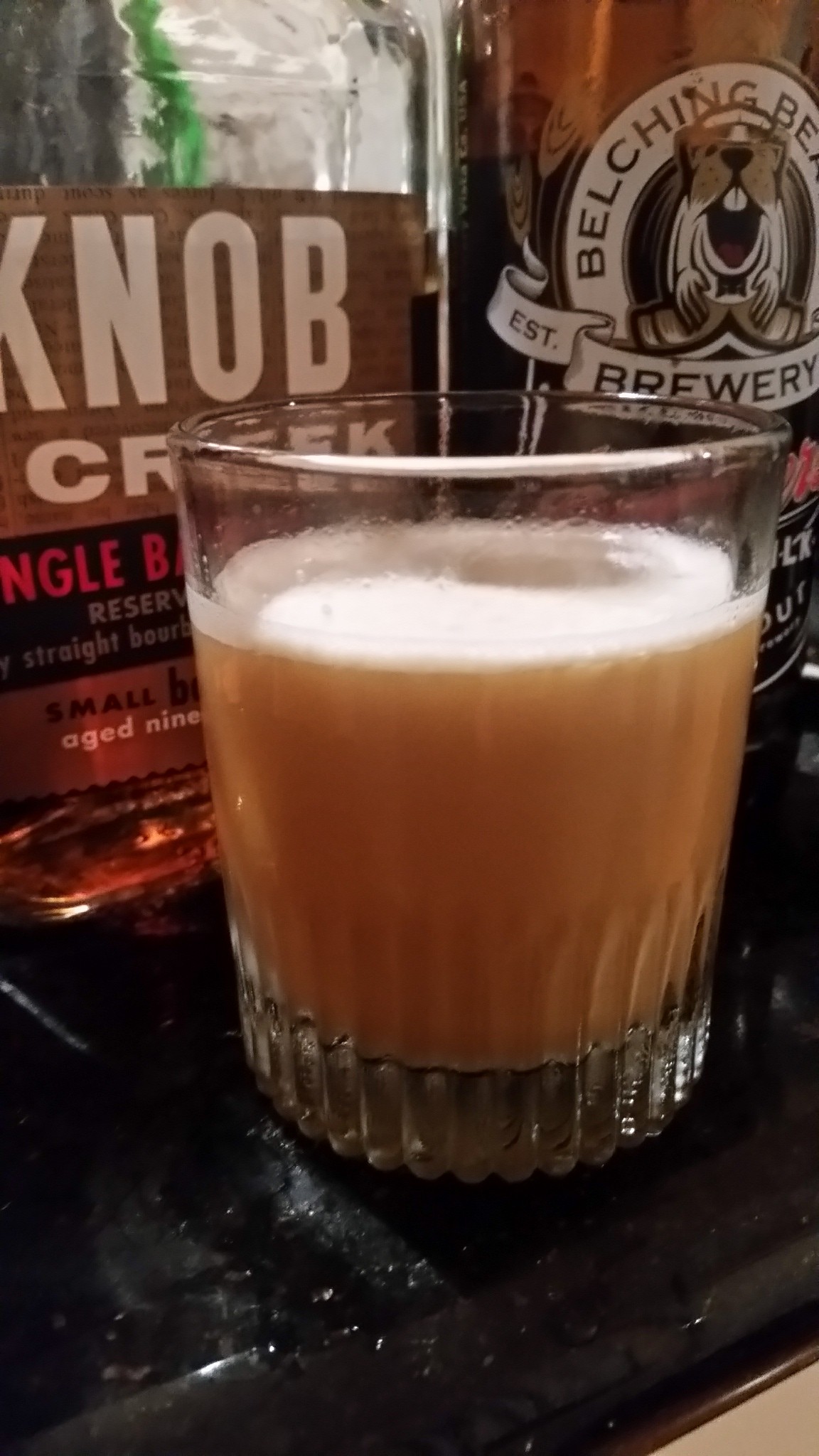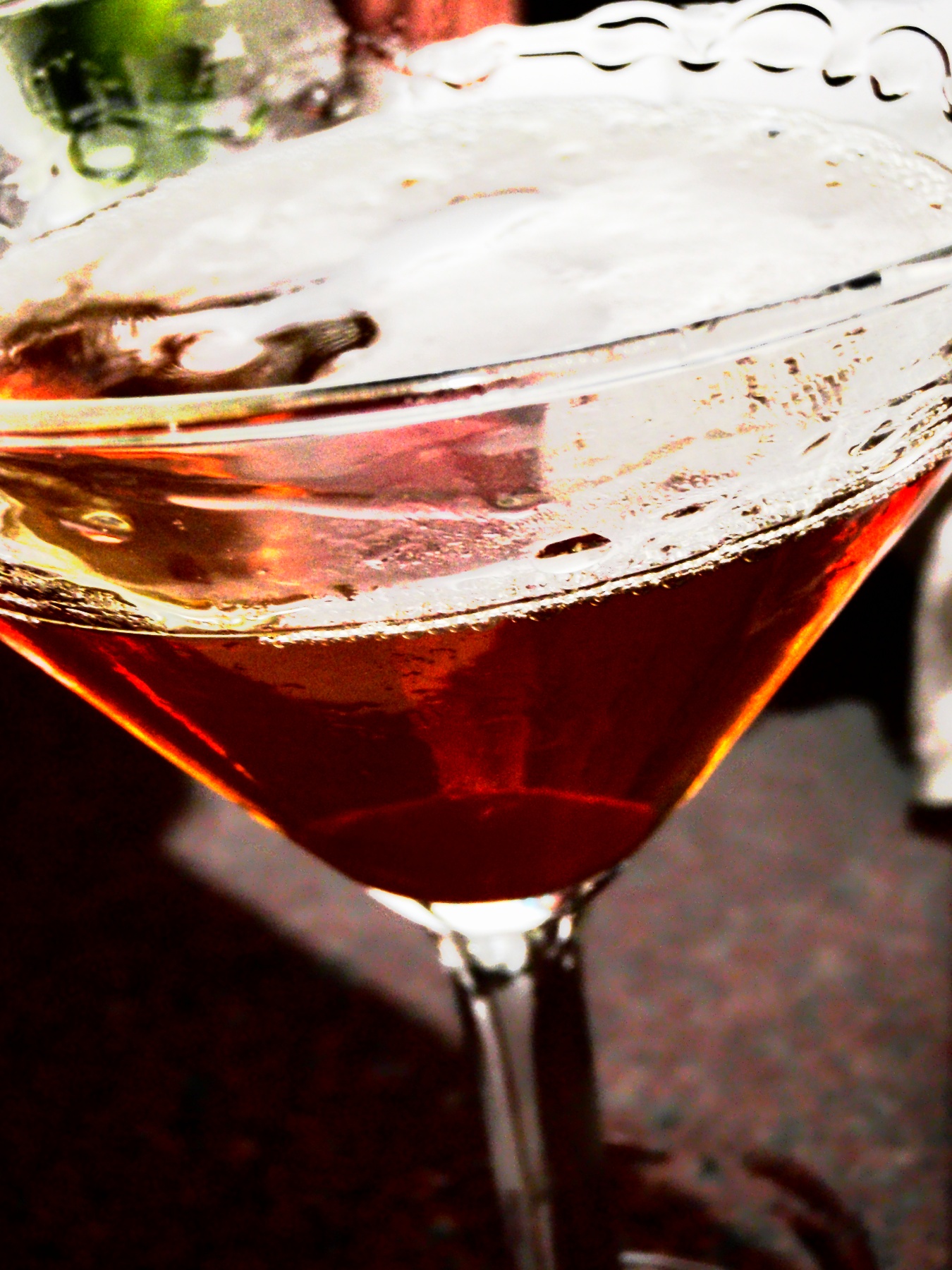Drink of the Week: The Big and Stout
 I see my share of boozy pitches here at Drink of the Week Central and, believe it or not, I ignore a great many of them. Still, I couldn’t ignore the one that came from the melding of the great nations of Japan and Kentucky that we call Beam Suntory. Why is easy to explain.
I see my share of boozy pitches here at Drink of the Week Central and, believe it or not, I ignore a great many of them. Still, I couldn’t ignore the one that came from the melding of the great nations of Japan and Kentucky that we call Beam Suntory. Why is easy to explain.
I’ve been increasingly interested for some time in cocktails that include beer or ale. Also, regular readers will note that I’m mad for drinks that include raw egg whites or, better yet, whole raw eggs. So, no surprise that the Big and Stout immediately caught my attention as it contains both stout and whole raw eggs! It’s also created by Midwestern celebrity chef Michael Symon and I gather he’s a very big deal in Bullz-Eye’s home town of Cleveland. Based on this drink, I’m definitely willing to plunk down $75.00+tip and cocktails for one of this guy’s dinners.
The Big and Stout is, I should add, well named as I’m personally a bit bigger and stouter after drinking it for an entire week, but it’s just about worth it. It’s a full-fledged desert in a glass, a full bodied drink that’s the perfect 100% adult sophisticated milkshake without the milk, wonderfully simple and quite hard to mess up — it’s been pretty much a home run every time I’ve tried it, which is saying something. Let’s not waste any time.
The Big and Stout
1 ounce bourbon (true sophisticates will want Knob Creek Single Barrel Reserve)
1 1/2 ounces milk stout/sweet stout
1 whole egg
3/4 ounce simple syrup (or 1 rounded tablespoon superfine sugar)
Combine the ingredients in a cocktail shaker. Shake without ice first (the famed “dry shake”) to properly emulsify the egg. Be careful; between the egg and the slight carbonation of milk stout, there’s an excellent chance the top of your shaker will want to come off. Add ice and shake again, this time very vigorously. Strain into a well chilled old fashioned or cocktail glass. Toast your feet. Drink enough of these and you might never seem them again, though you probably won’t care.
****
So, yes, this drink comes to us courtesy of the gods of promotion over at Jim Beam land and their small batch collection. It was, I gather, created for regular Knob Creek bourbon, but what I actually got was Knob Creek Single Barrel Reserve and an old favorite, Basil Hayden’s. It’s a very interesting spread because both of these are thoroughly adult, sophisticated bourbons but at vastly differing strengths. Hayden’s is 80 proof, actually below average strength for an upscale bourbon but well above average in flavor and drinkability. The Knob Creek Single Barrel is a whopping 120 proof and has a full 10 percent more alcohol than regular 100 proof Knob Creek. It’s definitely the good stuff but not for the faint of heart or liver.
I’m delighted to say that both extremes held up brilliantly in a Big and Stout. Sure, the complexity and pure fire of the 120 proof brew gave all the sweet ingredients something they could fight against for a somewhat more complex beverage. Still, the 80 proof Hayden’s was a delight and anything but insipid. I also tried a pretty decent 94 proof brand X bourbon and it was great, too. Frankly, I have a hard time imagining any bourbon failing with this one, and I’m contemplating giving rye a chance.
As for the stout’s, the original recipe called for sweet stouts but that turned out to be nearly impossible to find here in L.A.’s NoHo/San Fernando Valley land. Milk stouts, which have a sweeter flavor thanks largely to some lactose, are much easier to come by and may or may not be synonymous with sweet stouts, I’m still trying to figure that one out. My choices were Moo Thunder Farmhouse Ale and Belching Beaver Brewery’s Beaver Milk. Gotta love the names and both worked really winningly.
Trying to figure out why I like this drink so much may go beyond a simple love of sweet, creamy, ice-cold refreshing booze flavors and have something to do with my love of coffee…which I actually prefer with a decent amount of milk and sweetener, despite my alleged gourmet tendencies and tolerance/love for bitter flavors. Even more than the similar yet very different Coffee Cocktail, this drink really looks and tastes a bit it like a frozen latte but with a very different impact. Maybe that’s it.
You can follow us on Twitter and Facebook for content updates. Also, sign up for our email list for weekly updates and check us out on Google+ as well.

 I was a little under the weather and teetotaling last week, and so I found myself late this weekend with a decision. I could take a week off from our little weekly get together. I could make a drink exactly once or maybe twice and call it a day…something I really don’t like to do. Or, I could fall back on a drink I frequently make that I somehow haven’t written up here before.
I was a little under the weather and teetotaling last week, and so I found myself late this weekend with a decision. I could take a week off from our little weekly get together. I could make a drink exactly once or maybe twice and call it a day…something I really don’t like to do. Or, I could fall back on a drink I frequently make that I somehow haven’t written up here before.









